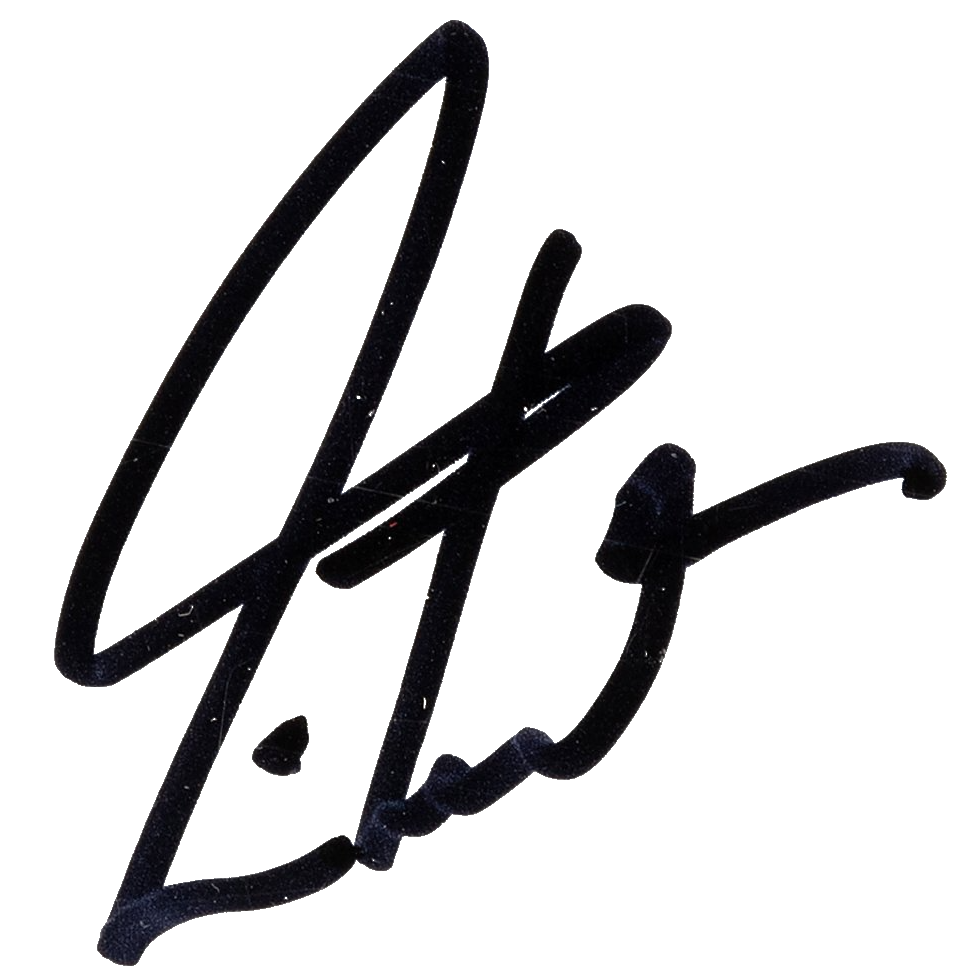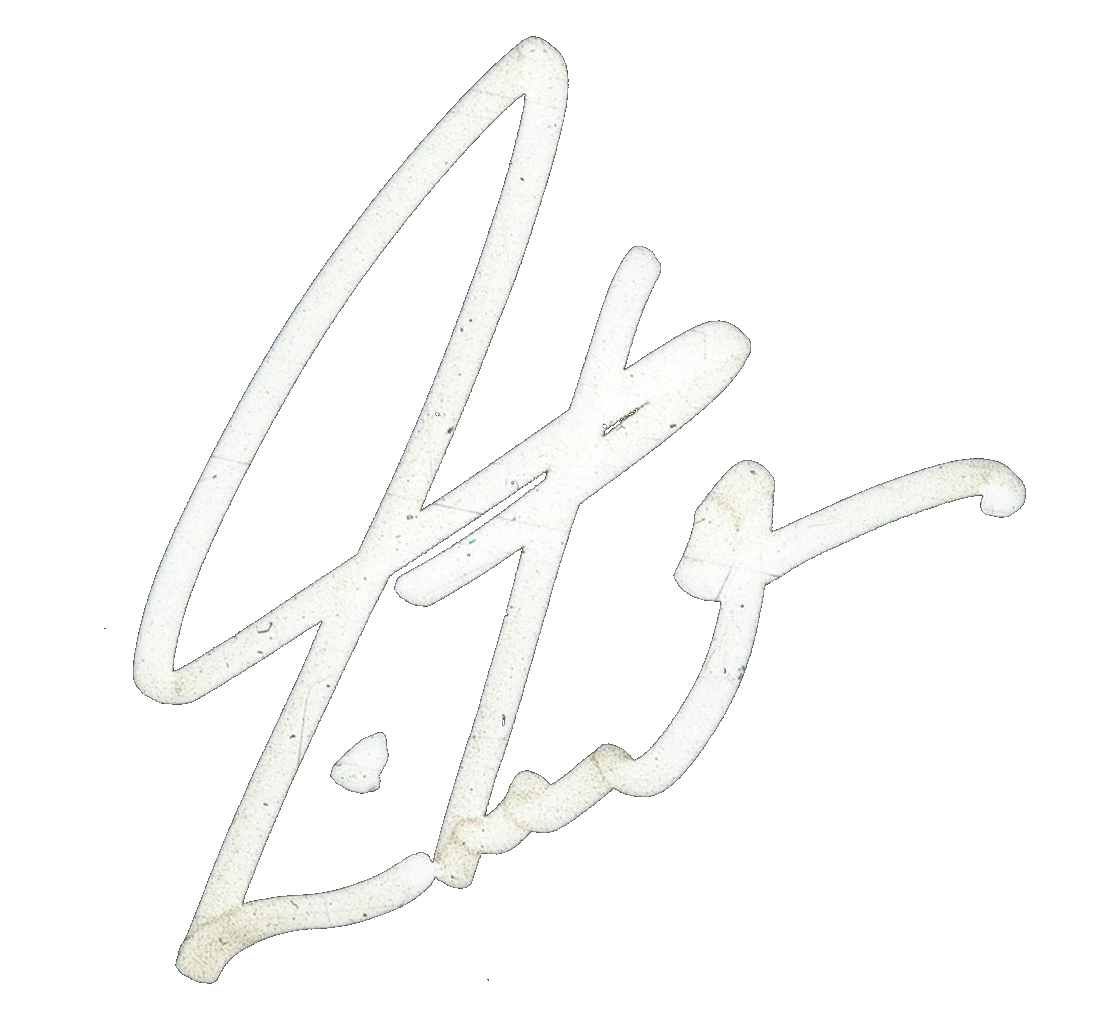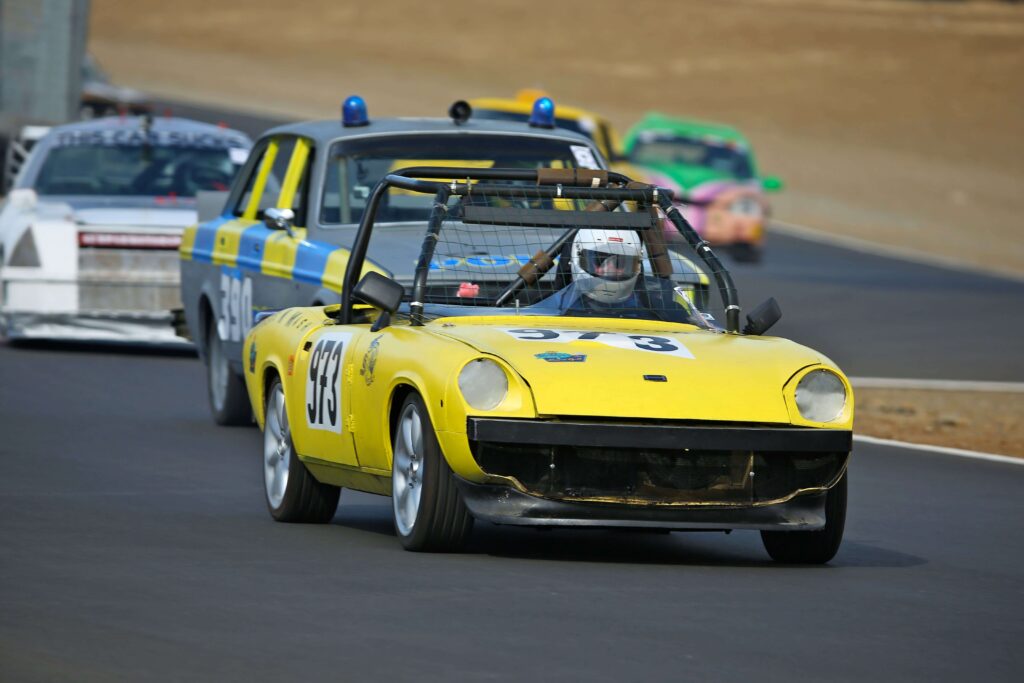
Photo by Head-On
Chapter One — Bamm Bamm and the Lemon Slug
(See July 2014)
Chapter Two — Return of the Lemon Slug
The Bangers ’n’ Mash racing team’s first attempt at the 24 Hours of LeMons, in June 2014, had been . . . oxymoronic. A triumphant disaster. A victorious failure. A shining disappointment. A tarnished joy.
Still, ever hopeful, we signed up for a race in September, at Thunderhill Raceway in Northern California. This time we were hoping for better. Maybe just the good part—the triumph, victory, and shining joy. Maybe just keep the car running and finish the race.
But alas, the summer of 2014 swept chief enabler and Lemon-Slug preparer Inspector Clouseau into a whirlwind of pressure and worry. As mentioned in “Bamm Bamm and the Lemon Slug,” Clouseau’s teammates lived far away from his home garage in the Santa Cruz Mountains. Except for an occasional appearance by Wrong Way, a deputy district attorney from across the Bay, we were not available to help with the car.
Bad Grampa is an English expat living in San Francisco, and is also an attorney, as is his son, Frisco Kid. (When he chose that nom-de-pilote, he told us, “When else am I going to get to call myself that?” Bamm Bamm had the same thought.) Our common ground was owning older Aston Martins, about which Clouseau is an acknowledged zen master, so we had all come to know each other through him. (When I bought my 1964 DB5 from Wrong Way in 2006, I kind of inherited Clouseau as its custodian—he still likes to refer to it as “my car.”)
At the beginning of the year, when this quixotic campaign (that’s good!) had first been discussed (famous last words: “it started as a joke”), Clouseau had a part-time assistant to help in his shop and with the LeMons car. That way he might be able to take care of his thoroughbred-car-fettling business while work went forward on the Lemon Slug. Unfortunately, that partnership came to an early end, leaving Clouseau stretched beyond human limits.
As race weekend loomed, Clouseau just barely got the car back together and loaded into the trailer, with no time for testing. He was exhausted and beyond stressed, and I’m sure the redwood-scented air around his home in the Santa Cruz Mountains echoed with colorful expletives. Stenciled on the rear bumper of the Lemon Slug is one of the team’s slogans, “Powered by Tourettes.” It was inspired by Clouseau’s flights of profanity in Utah, when he was tired and frustrated with the battle against a 1973 Jensen-Healey. Surely by the wee hours of Friday, September 6, Clouseau had a few choice words.
That morning was the test and tech inspection day at Thunderhill, and Clouseau had intended to drive to the track the previous night—but he just wasn’t ready. Also, by that time Clouseau was in such a state he couldn’t trust himself to drive the 200 miles to Willows, in the northern Central Valley—afraid he would pass out behind the wheel. Bad Grampa stepped up and met Clouseau near San Francisco before dawn, and took over driving his truck and trailer. Poor Clouseau immediately fell asleep in the backseat, and didn’t stir for the three-hour journey.
Team photographer and cheerleader Craiggie and your reporter Bamm Bamm Rubble arrived at Thunderhill early that morning to scout the pit area. We parked our rental car in an open space to stake it out while we waited for Bad Grampa, Clouseau, Wrong Way, and Frisco Kid.
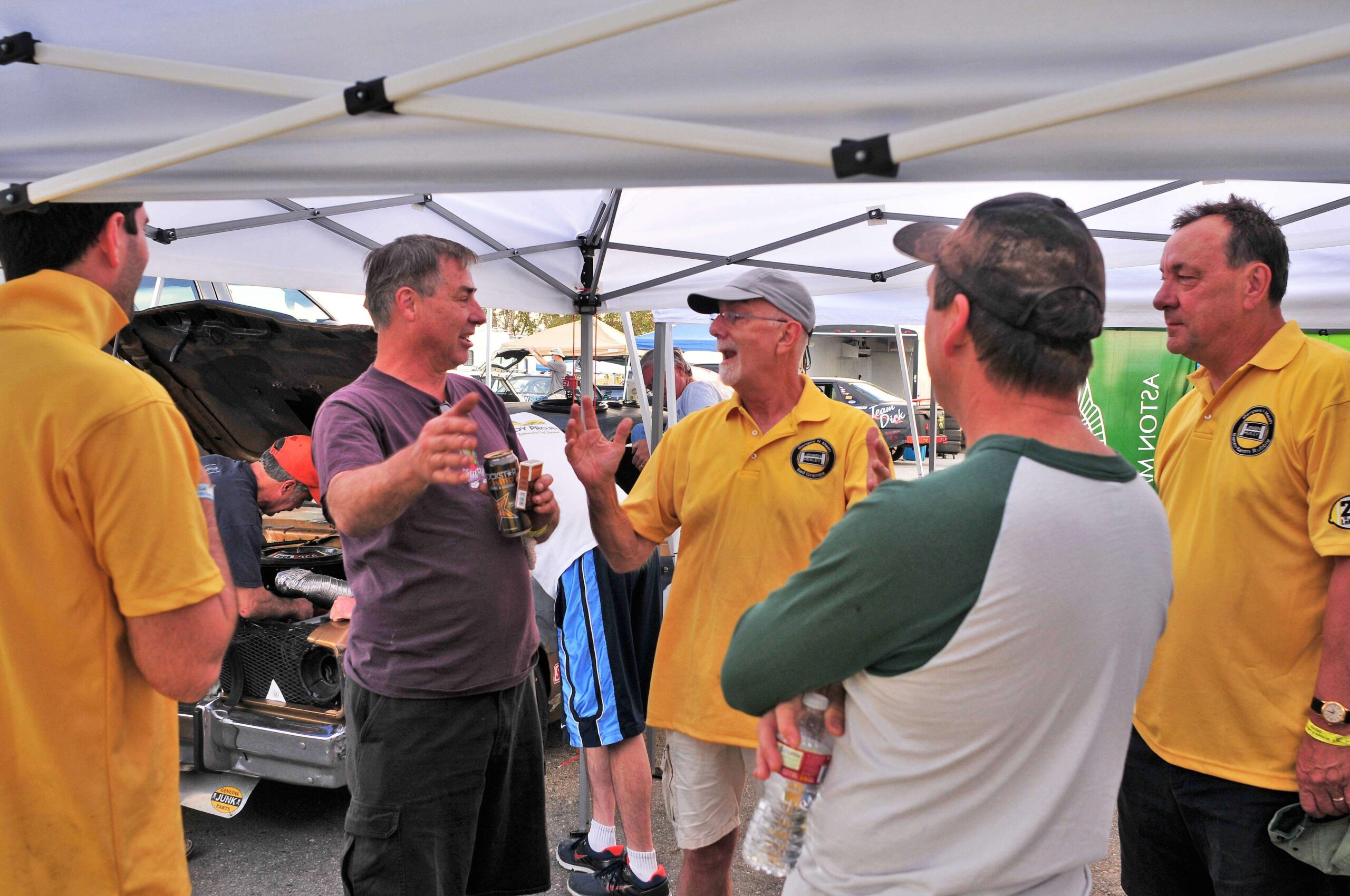
photo by Craig M. Renwick
Together we got the Lemon Slug untied and unloaded from the trailer, and put up Bad Grampa’s tent-type shelters. The shade was already welcome, as the temperature climbed toward 100 degrees, where it would broil us for the next three days. Like the rest of California, the northern Central Valley, properly the Sacramento Valley, had endured years of drought. The rolling grasslands around Thunderhill were actually called the Voodoo Hills, which would have been a great name for the racetrack, I think. The grasses were parched and colorless, brittle on the rounded hills.
While we worked to get all the equipment organized, we held an informal team meeting about our “strategy.” All of us knew the original layout of Thunderhill very well (having met there through Aston Martin club trackdays), but an additional two miles had been added to the circuit. At almost five miles, it was now one of the longest roadrace tracks in America, with a number of unfamiliar and intentionally devilish turns.
Still, we all agreed that testing was A) potentially injurious to the car, and B) not really that useful—because during the earlier slow laps, or even in the normally “heavy traffic” of LeMons racing, we would have time to learn the new part of the track.
Then Clouseau came up and told me that the team wanted me to start the race. That was an unexpected surprise, and a daunting one. It brought on a gulp of apprehension. In Utah, my first ever experience of actual racing, I had carefully called dibs on going last. But now I felt better about the idea, having observed how the start of that race hadn’t been the out-of-control free-for-all I had visualized, but rather a stately procession of cars under a double yellow flag (no passing). When the green flag waved, the cars accelerated to racing speed as well as they were able—but they were all 500-dollar cars, so there were no displays of, say, Formula One quickness.
Scoring was based on the number of laps completed, as measured by a transponder under the car. The field was divided into A, B, and C classes—more or less on a car’s odds of A) winning, B) being competitive, and C) finishing. (Need it be told that the Lemon Slug was in class C?)
Sitting in the shade by the trailer in the pits at Thunderhill, my thoughts went something like this: “Well. Hmm. Whoa. I don’t know. Hmm. It’s sure an honor—the guys nominated me to take the first stint. Seriously—wow. That is nice. Yeah. Gotta do it. We will take that challenge.”
(One of those times when my inner dichotomy of Bubba and the Professor weighs a decision, and we reach a collective agreement. The Professor calls it “the Editorial We”; Bubba calls it “the Royal We.”)
Sharing that news with Craiggie, I acted out a little pantomime, as if saying, “What? Me worry?”

photo by Craig M. Renwick
To add to the day’s potential madness, the organizers were aiming for a Guinness World Record: the most cars ever on a track at one time for an endurance race. (People never stop inventing things to hold records for!) They succeeded, too, and thus I sat suited, buckled, strapped, manacled, and helmeted in the Lemon Slug—among 216 cars crammed into seven multi-colored lines along the hot pits and front straight. Staging all that took a while, and we sat with our engines running for a long time, on a hot morning. The smell was hardly pleasant, nor was watching the needle on the water temperature gauge rise ever higher. I was afraid to shut down the engine, worried that it wouldn’t start again. (Our faith in the Lemon Slug was feeble anyway, and a hot engine can be reluctant to restart.) I kept looking up to the officials at the head of the line, hoping for any sign of action, while glancing down to that needle, as it slowly but steadily crept toward the red zone and the big “H.”
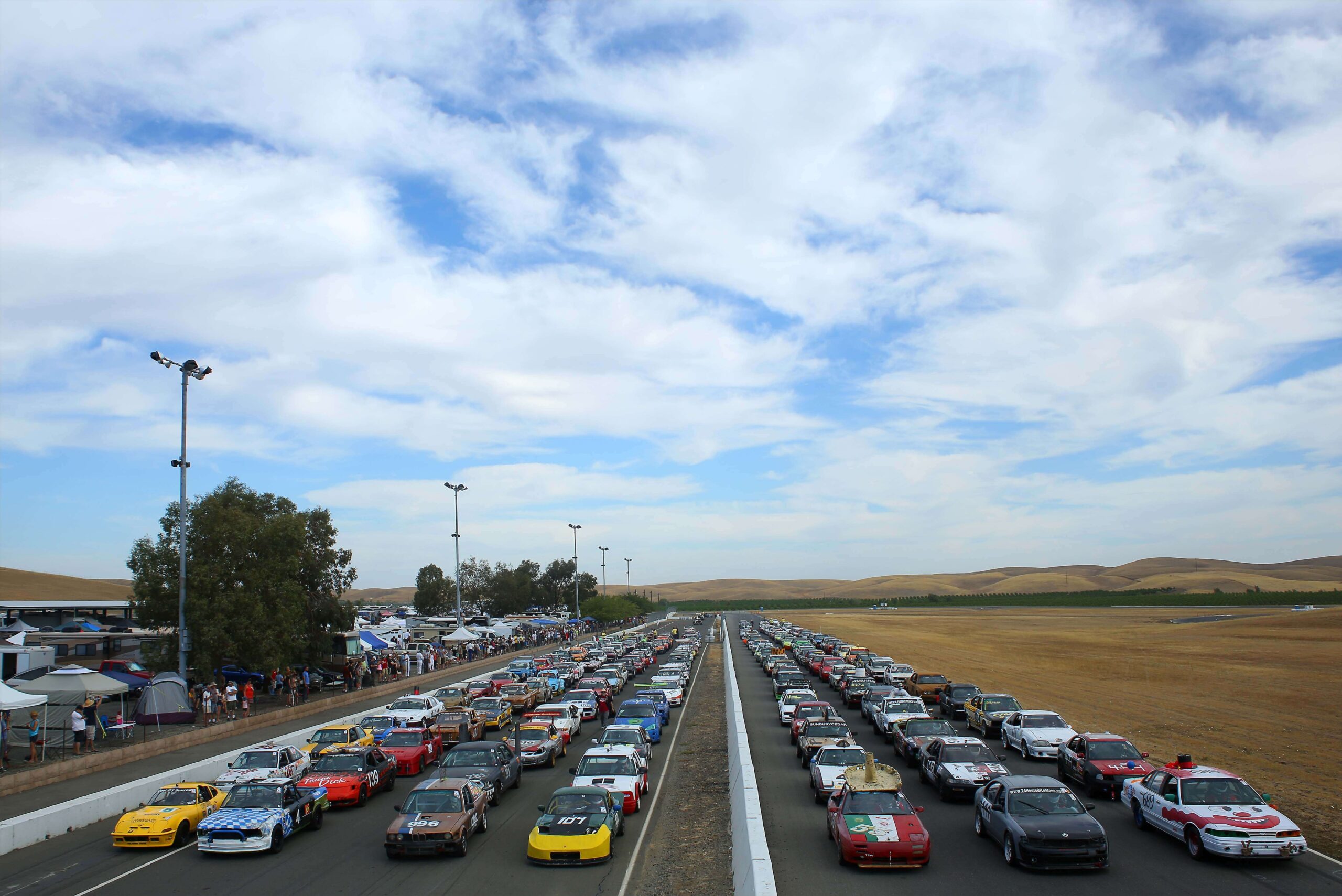
photo by Head-On
Finally they waved us away, and we began circulating under that double yellow. Having so many cars on the track at once caused many slowdowns at the tighter corners, sometimes bringing us to a standstill again. After two or three laps, before I knew it, suddenly we were racing. The green flag must have waved while I was between stations, for all at once I heard straining engines, and my mirrors filled with garish bodywork looming toward me. Yikes!
The frenetic early maneuvers gradually calmed (if that’s the word) to a steady pace of cars overtaking and passing me. Our four-cylinder Jensen-Healey could not compete with the class A and B cars—big American V8s and more sophisticated BMWs and such. I did pass the odd Pinto or Peugeot, but mostly I just tried to let the testosterone-driven maniacs (the “T-Men”) get past me safely.
For example, you could never follow the racing line to the inside of a corner without looking behind and beside your car, twice. The T-Men love to dive through in a place like that, thinking they’re “accomplishing something.” All they’re doing is sticking their nose where you were obviously aiming yours, so if you don’t want to crash into them, you have to run wide. Some choice.
On the brief straights I glanced down at the gauges, and even though the car was moving through air now, the water temperature was still rising. The needle was dangerously close to the red zone and the “H,” and I decided that if it reached a certain point—focusing on a millimeter under the red—I would return to the pits. Making that resolution took an effort of will, but I did not want to be the one who blew the Lemon Slug’s engine in the first hour of the race.
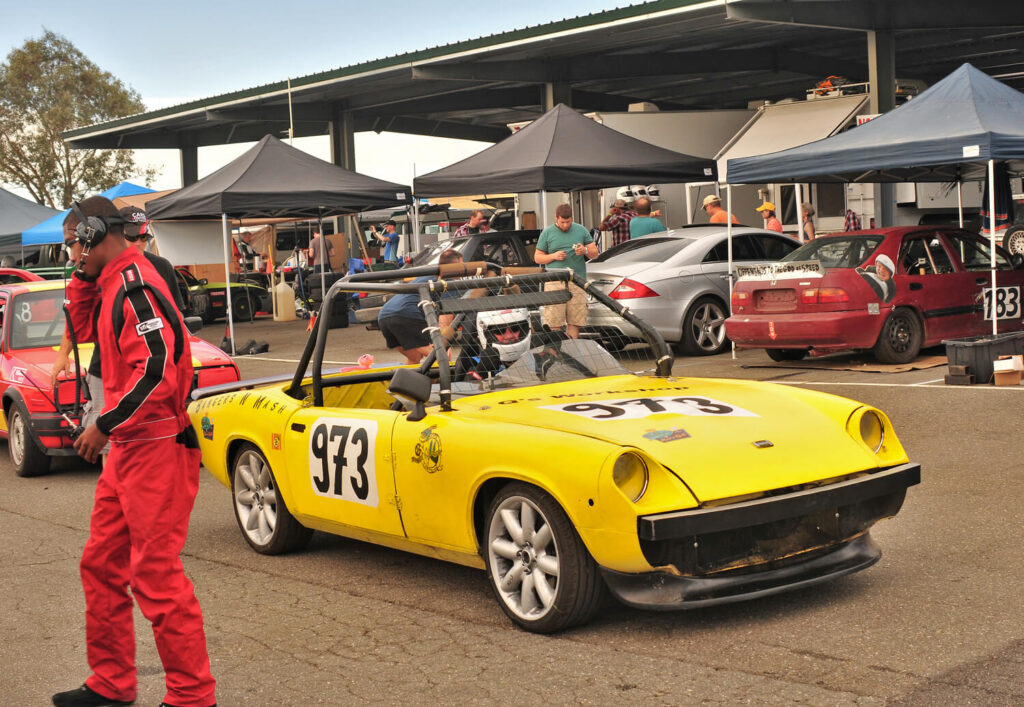
photo by Craig M. Renwick
After completing maybe twelve laps, I steered into our work area and parked, then told Clouseau what was happening. The guys lifted off the hood while Clouseau checked the oil (low, one reason for the overheating was oil leaking away) and peered down at the engine. He diagnosed the problem as a leaking main seal at the rear of the block. The cure was major: dismantle the entire driveline—the bellhousing, flywheel, clutch, transmission, and driveshaft—to get at that seal and replace it. Oh, it wouldn’t be as monumental a task as we faced in Utah, removing and replacing a complete engine. But almost.
As for the seal we needed, Clouseau had . . . meant to bring one . . .
By the time he was loading the trailer late the previous night, the poor guy was so drained and scattered that things had been missed. He called his son Dustin at home, had him verify that the seal was in a box by the garage door, then got Dustin on his way in our direction. The plan was for Bad Grampa to drive his Aston Martin south and west toward the Bay Area to meet him and relay the seal back to us. Dustin had to make his way out of the congested Bay Area, so Bad Grampa would leave in an hour or so to meet him halfway.
For now, I changed out of my driving clothes, Bad Grampa put on the pre-owned blue overalls he had bought during one of our many visits to an auto-supply store in Tooele, Utah (useful souvenir!), and Wrong Way suddenly recalled an urgent errand at home . . .
Directed by Clouseau, ably assisted by Bad Grampa, we started taking things apart. Frisco Kid and Bamm Bamm were assigned the less technical jobs, and Clouseau wanted me to disassemble the shifter, another job I had never done in forty years of messing around with cars, but with Clouseau’s guidance I managed it. Then I found myself lying on my back under the car, bench-pressing the bellhousing and transmission while Clouseau struggled with fasteners. (With the inevitable Tourettes outbursts.) Sometimes I scrambled out to find tools for him—just as I used to do for my dad when I was a kid and he was working on our ’55 Buick.
Then Clouseau got a call that Dustin’s Mitsubishi had blown up near San Jose, and he was parked at an offramp. Bad Grampa would have much farther to go, and he would have to leave now.

Bench-Pressing the Bellhousing
photo by Craig M. Renwick
Craiggie and I drove to the nearby town of Willows (population 6,000) to buy some parts and supplies. In no hurry, we cruised the streets of the “historic downtown,” and the nearby residential streets. A number of impressive public buildings and Victorian mansions told of a thriving past, while a historical museum in the old Carnegie Library building and a well-tended city park told of present-day pride. Like so many small towns, especially in the West, Willows was struggling—but not surrendering. On our way back to the track we stopped at one reason for the downtown’s decline: the Wal-Mart that crouched on the edge of town. As elsewhere, people had voted with their dollars.
Back at the track, we waited another hour or two before Bad Grampa returned—even after making good use of a navigational app that told him where the police were, and where they were not, so he could get away with speeding.
(Because he was on an emergency mission, clearly.)
One bonus in that waiting time was that I borrowed our neighbor’s mountain bike and cruised around the paddock a few times in the late afternoon, and again in the evening, when the racecars were parked. The level of humor, high spirits, and camaraderie among the teams was infectious. Teams drove their racecars slowly around the paddock, stopping to distribute beer from working taps on the backs of the cars (very impressive!), or one with a “boxed wine” theme, called “Frankenzia” (their slogan: “Liquid Stupid”).
It was party time all right—but not for the Bangers ’n’ Mash team. Bad Grampa arrived around then, bringing the needed seal, and we set to work installing it and reassembling the drivetrain. Before long one of the needed tasks was someone to hold a flashlight (I’m good at that—so’s Craiggie), because it was dark. By nine o’clock we finally had it back together, but couldn’t test it. At Miller Motorsports Park in Utah we had been able to fire up the replacement engine with a mighty roar at ten o’clock at night and be greeted by an answering roar from the nearby campers—cheering our heroic victory. At Thunderhill, prominent signs around the paddock read: “No Race Engines After 6:00.”
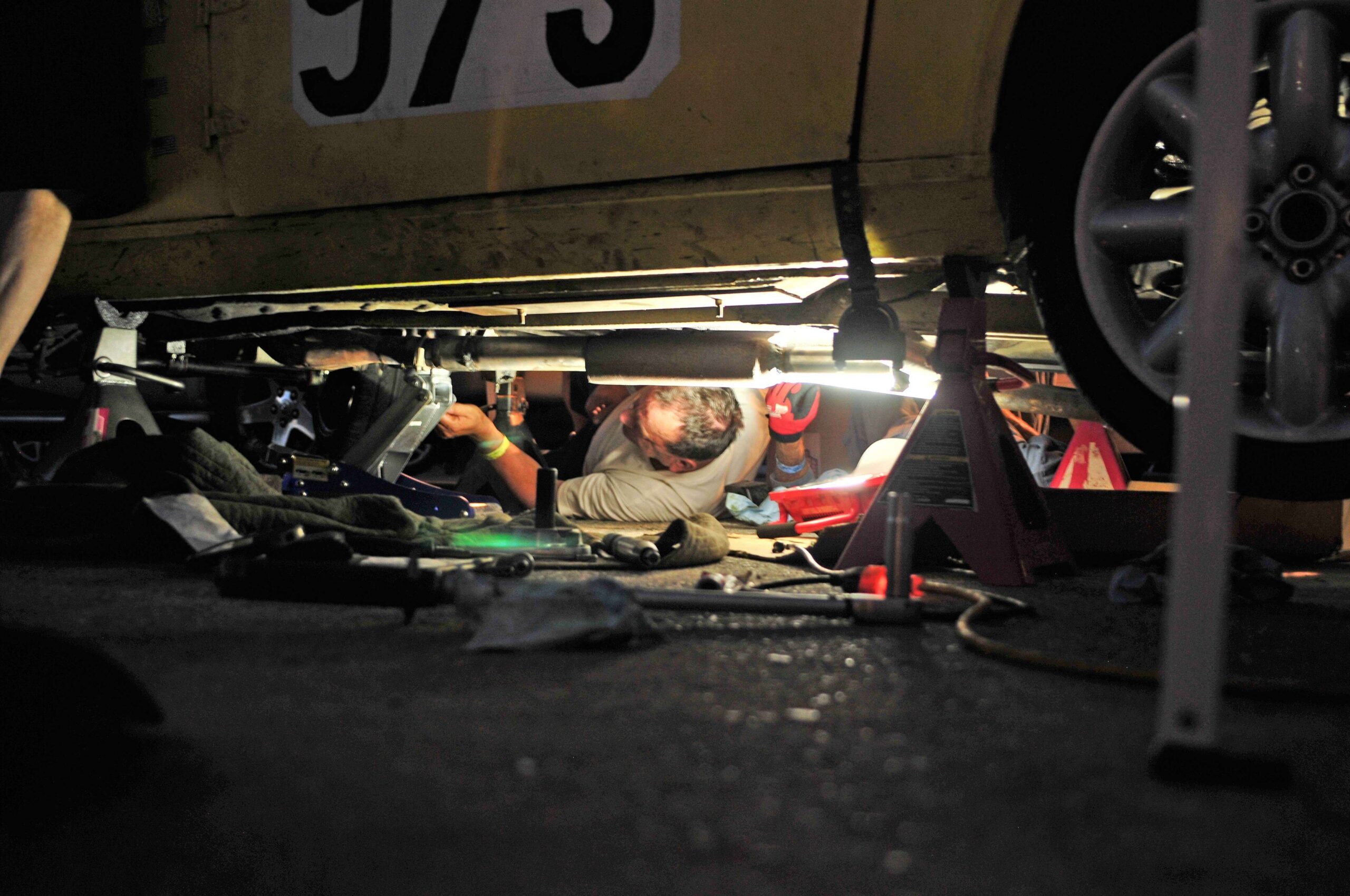
Bamm Bamm, Bad Grampa
photo by Craig M. Renwick
We cleaned ourselves up a little and headed to town and a mediocre pizzeria (is that an unnecessary modifier?), then back to the motel. We agreed to meet early and head to the track—see what we had wrought.
Next morning, as we gathered around the Lemon Slug with multiple fingers crossed, the engine wouldn’t turn over at all. Clouseau couldn’t budge it, even with a big wrench on the crankshaft—it was seized solid. A collective sinking of the heart went around the team, and accusing looks and comments shaded my way—all joking, I’m sure. Or at least mostly. I insisted it hadn’t been my fault—I knew from long experience with old British cars what severe overheating would mean. Once I had even changed a head gasket on my ’69 MGB—with help from a real mechanic. I was sure I had brought the car in soon enough, and that the engine had not been seized or damaged when I parked it.
Clouseau seemed to have a suspicion (if not a clue, like his namesake), and directed us to start disassembling the driveline again, so he could look inside. When we pried the bellhousing away from the block, Clouseau saw that the new fasteners he had installed on the flywheel had oversize heads—they were fouling against the clutch.
Taking everything aft of the engine apart and putting it back together went faster this time (practice!), and in a couple of hours we were ready to try again. Frisco Kid took the car out—his first time ever driving it—but he was back in after a few laps. Still overheating.
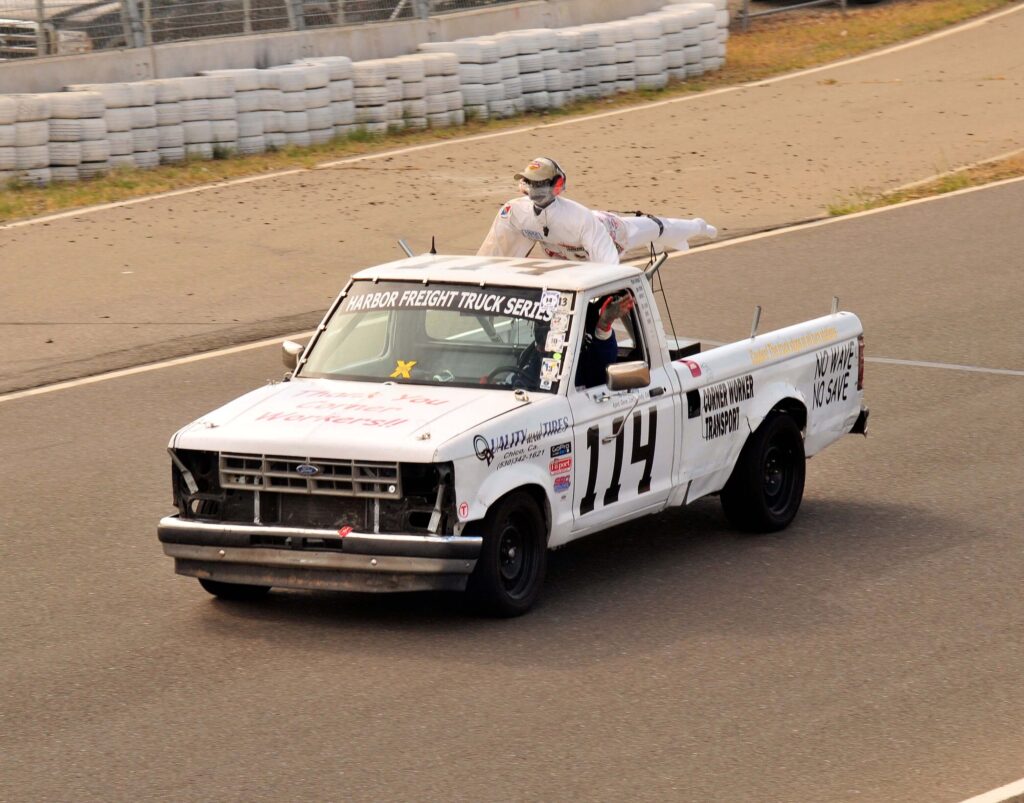

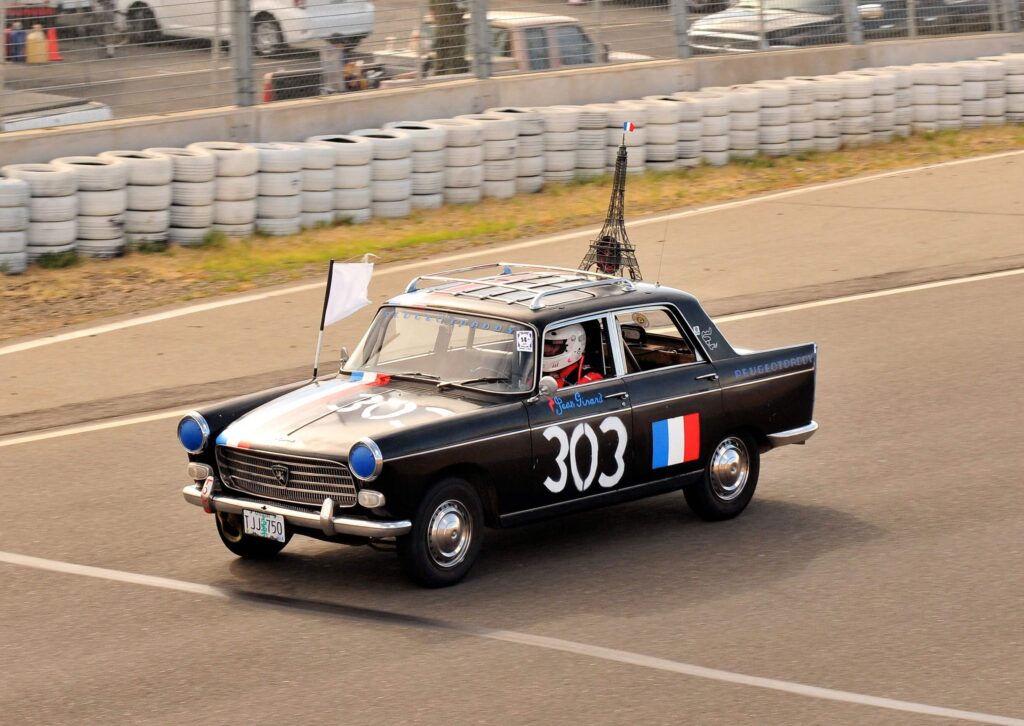
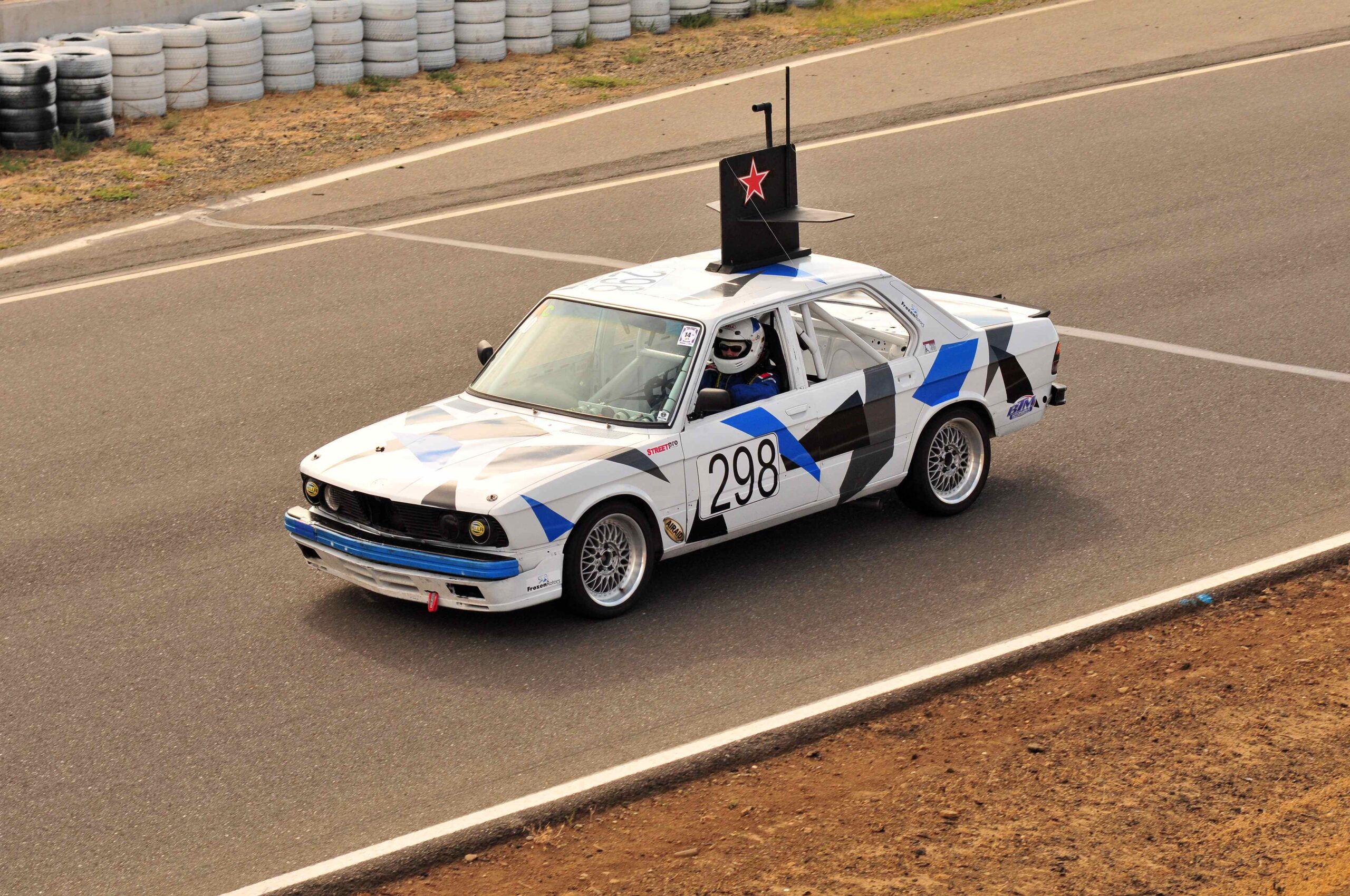
Some of our Deadly Serious Competition
photos by Craig M. Renwick
Clouseau was starting to overheat, too, and uttered a few choice oaths as he took a piece of scrap sheetmetal from his trailer. With Bad Grampa’s help, he fabricated a crude heat shield to go between the oil cooler and the radiator. We added oil and water (emptying it from our handy cooler, so ice water—“like drag racers use,” somebody remarked) and sent Bad Grampa out for a try. But it was no good—he only stayed out one lap before coming in with the needle on “H.”
That one lap had been quite “eventful” for Bad Grampa, though, we heard later. First he startled himself by spinning in a corner, making a full 360-degree pirouette that left him pointed down the track in the right direction again—then a few corners later he felt a hard bump from behind. When he climbed out of the car, he pointed to a big dent in the right rear fender.
We lifted off the hood again. With a rag against the heat, Clouseau twisted the cam-cover cap and removed it. He showed us the gooey, milky emulsion under it—a chemical combination of oil and water. That meant the head gasket had blown, mixing the fluids. Clouseau said, “We’re done.”
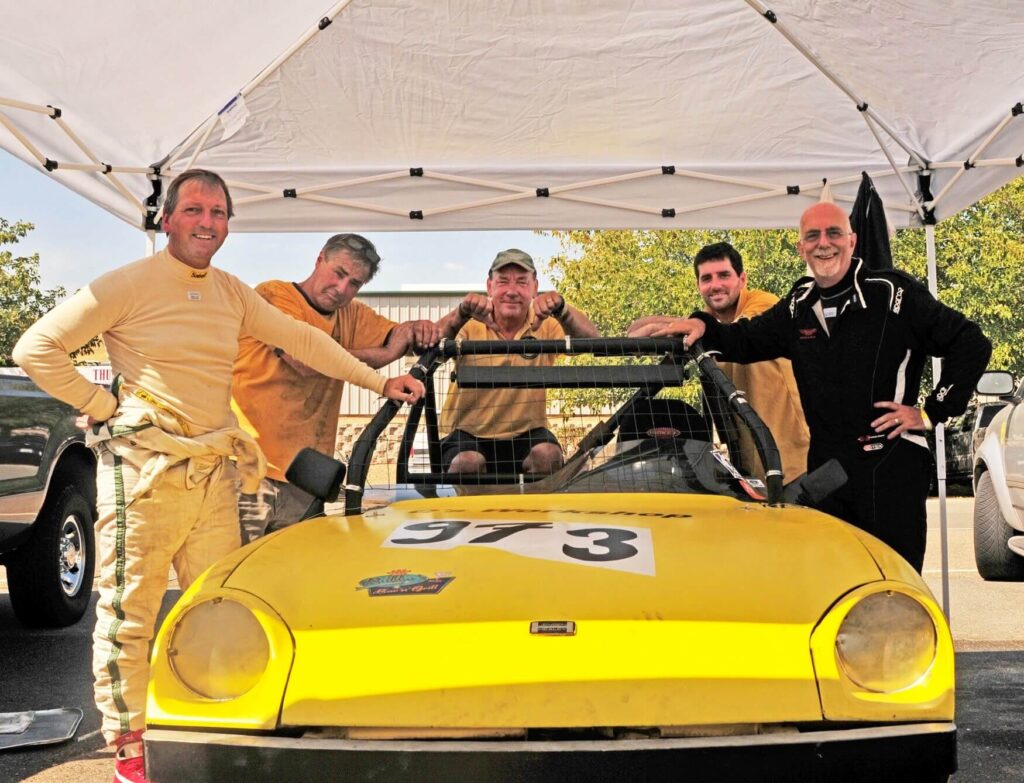
Wrong Way, Clouseau (looking rueful),
Bamm Bamm, Frisco Kid, Bad Grampa
Photo by Craig M. Renwick
The team knew I had been holding back on publishing my story about the Utah race because I wanted to protect the wonderful anonymity I had enjoyed there. (Still smiling to remember lying under the car with grease up to my elbows and looking up to see a guy in a Rush T-shirt walking by, all unsuspecting.) I told the guys the Thunderhill race would be Bamm Bamm’s last, and that I would be posting the story—and blowing my cover—the next week.
As we pushed the Lemon Slug into the trailer, I said to Clouseau, “As a racing driver, I’m getting to be a pretty good mechanic!” He shook his head with a rueful look, then gave me one of his irresistible grins and said, “We can’t let it end like this.”
A few minutes later Bad Grampa pulled me aside for a talk, and said, “It would be really nice just to finish a race, wouldn’t it?” He suggested that he and I, as the most “solvent” team members, partner up and see if we couldn’t help Clouseau pay someone to help him.
Of course I too felt we had unfinished business with the Lemon Slug, and Clouseau’s and Bad Grampa’s urgings were effective. I knew what I had to do: hold back the story and join the team in one more try—the December “season ender” at Sonoma Raceway, north of San Francisco.
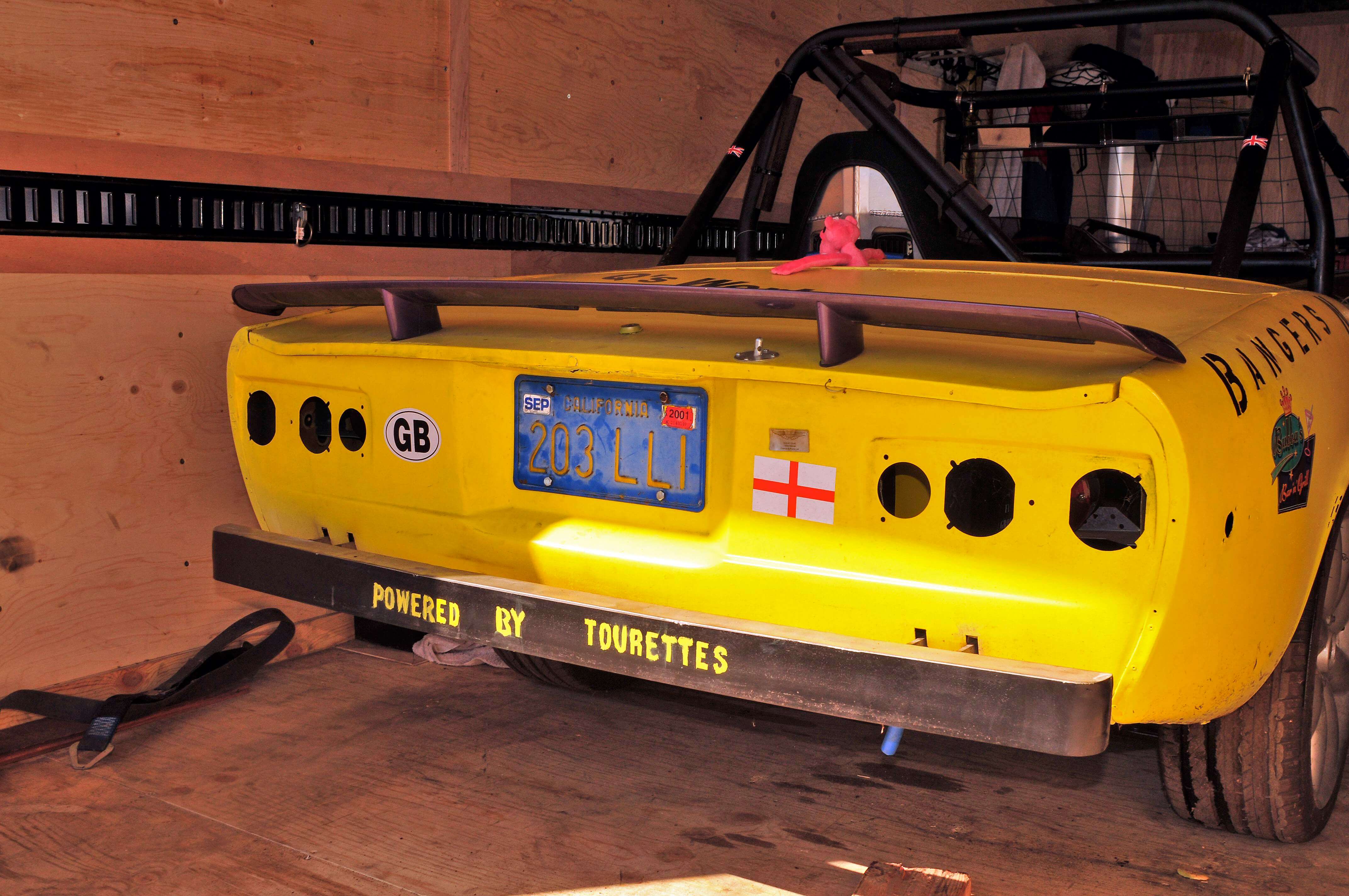
photo by Craig M. Renwick
Late that afternoon I started my journey home, always freshly amazed to be driving my modern, luxurious Aston Martin Vanquish after wrestling with the primitive, agricultural Lemon Slug (no offence). They were certainly polar opposites of performance and refinement. I drove a couple of hours to a small midstate city, and checked into an old-school Best Western, the preferred park-in-front-of-your-door kind. Tellingly, just a few miles away on Interstate 5 there was a “big box” version, which is the popular preference these days. (Perhaps the interior corridors give a greater feeling of security?) The “traditional” motel, where I have stayed half a dozen times on the way home from track days at Thunderhill, was on the old state highway, 99.
Another local attraction was the Japanese restaurant in a nearby strip-mall—sounds unpromising, I know, especially being so far inland, but it was world-class in its quality and presentation. I have discovered so many “local treasures” like that around the country. One example I sometimes cite, because so unlikely, is a fine and authentic French restaurant in a suburban strip-mall ten freeway exits from downtown Knoxville, Tennessee. Few scenarios are less promising, yet for at least fourteen years a native Frenchman, a true artist in the kitchen, and his wife have kept that place going. Marvelous—almost miraculous. Certainly inspiring.
Likewise with this Japanese place, the Haru Sushi Bar, presenting artfully designed sashimi of finest quality in a suburban strip-mall in—okay, I’ll give it away—Lodi, California.
(If you are of a certain age, you will now be hearing a Creedence Clearwater Revival song in your inner jukebox.)
The last part of my drive into Lodi was a relaxed cruise on a narrow country road through pecan orchards. By then I was feeling more “philosophical” about the weekend’s misadventures, and daring to feel optimistic about the next race . . .
